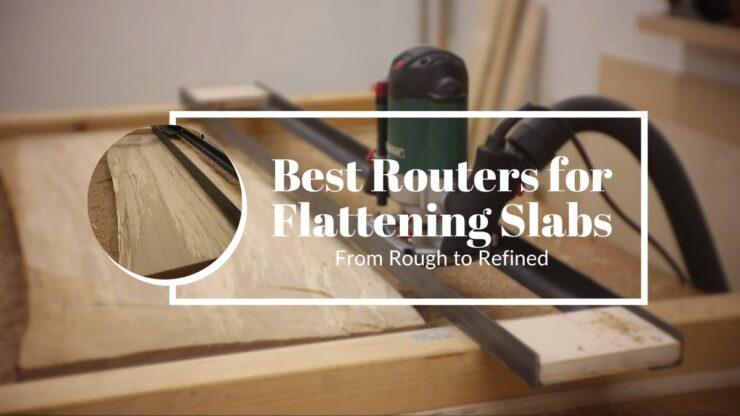The router is one of the most versatile and useful tools in any woodworking shop. It can be used to create intricate decorative details, smooth surfaces, and flatten slabs. When it comes to flattening slabs, it is important to find the best router for the job. There are several factors that go into selecting a good router for this type of work. The type of material you will be routing, your budget, and the size of your project all come into play when it comes to selecting a router for your project.
In this guide, we will discuss some of the key features you should look for when choosing a router for flattening slabs and provide our recommendations on which routers would suit different types of projects best. We will focus on both fixed-base and plunge routers as these are the two most commonly used styles for slab flattening projects.
Additionally, we will discuss some tips on how to properly use a router when working with slabs and provide some safety measures that should always be taken during this kind of project to prevent accidents or damage to your workpiece or yourself.
Types of Routers
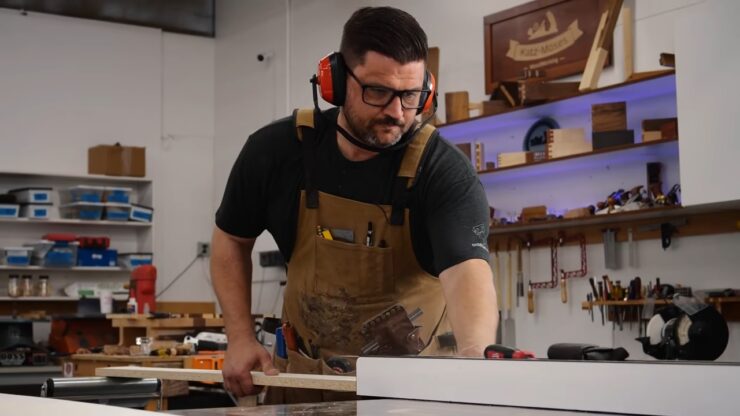
As a woodworker, you may want to consider investing in a router if you are looking to flatten slabs or make intricate pieces of furniture. They come in a variety of sizes and shapes, and each type has its own strengths and weaknesses.
In this section, we’ll discuss the different types of routers and how they can help you when flattening slabs.
Handheld Routers
They are the most common type of router. As the name implies, these are handheld and capable of moving in any direction. They are best suited for lightweight materials, such as soft woods and plastics but small enough to fit into tight spaces such as cupboard corners or furniture details. They typically feature adjustable cages that can be adjusted for depth stops, allowing for repetitive cuts at specific depths. They require woodworking skills and complete safety is paramount when working with one of these tools.
Table-mounted Routers
They are affixed to the surface of specialized tables or to the underside of standard workshop table saws. This type has variously shaped bases that allow for use with a variety of bits, attachments, and accessories. Many users opt for them because they provide more control and are more readily accessible than their handheld counterparts. Table-mounted models may offer several advantages depending on the needs of the user.
Table-mounted routers offer an amazing amount of control when routing any product allowing users a multitude of possibilities when conducting jobs like flatting slabs that require extreme accuracy when dealing with surface cutting irregular surfaces instead of manually shaping materials one piece at a time over slopes as a most ideal tool this job can handle multiple shaped cuts through wood, plastic or foam shape cuts much needed shaping wooden pieces making repetitive cutting tasks done quickly and properly, flattening slabs and handle large projects individually instead of manually.
Plunge Routers
They are a type that allows you to work on materials such as wood, laminate, and aluminum in situ, or at the location where they will be installed. Rather than carrying the heavy material over to a stationary workshop and cutting it on a large table saw or miter saw, you can use a plunge router to cut joints and rabbets quickly and accurately without having to move the material.
They allow for very precise depth adjustment which makes them ideal for flattening wood and other materials flush with the top surface of an object, tabletop, or work surface quickly and accurately.
Most of them have an adjustable depth stop so you can make repeated cuts at exactly the same depth. This feature is especially useful when performing delicate work such as rabbet joints or shallow mortises where precision is important. The range of router bits available for plunging operations is vast and these accessories can help produce professional results with ease.
Features to Consider
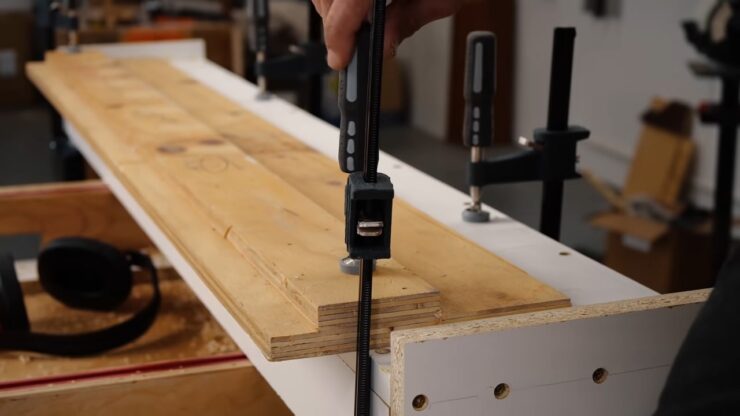
When choosing the best router for flattening slabs there are several features that should be taken into consideration. Not all of them are created equal so it is important to look for features such as rigidity, durability, power, and accuracy to ensure you get the most out of your router.
Let’s take a look at some of the features you should be considering when choosing a router for flattening slabs.
Motor Power
Motor power is a key feature to consider when shopping for the best router for flattening slabs, as stronger motors will provide more effective cutting performance. This is usually quantified in horsepower (HP). The higher the HP rating of a motor, the more difficult materials, such as hardwoods, can be expected to cut through with ease.
The type of motor also matters and can influence your purchase decision – some routers are equipped with brushless motors while others may have brush-type capabilities. Brushless motors are generally favored because they are larger, faster, and offer higher torque than their brush-type counterparts.
This can translate into less downtime between cuts and a longer overall lifespan for the router making them more energy efficient and cost-effective in the long run. Depending on your budget and how often you plan on using your machine, it’s best to consider both types of motors when choosing your router.
Speed and Torque
It’s important to think about speed and torque. The speed is measured in rotations per minute (RPM). Higher RPM speeds are good for cutting through heavier, harder materials while lower speeds are better suited for softer, lighter materials.
The torque is important because it affects the depth at which you can route. Routers with higher levels of torque will be able to route deeper than routers with lower levels of torque. It’s important to remember that route depth will also be affected by the speed so it’s important to consider both factors in order to find the right results.
In terms of safety, it’s a good idea to look for features such as an electronic brake system, which stops spinning blades quickly in case the operation is stopped suddenly or an electrical overload happens. Some of them also feature an adjustable soft start mechanism, which helps reduce vibration and sound levels when using these machines at higher RPMs. This can provide users with additional flexibility and control when routing or flattening a slab.
Base Plate and Shaft
When choosing the best router for flattening slabs, it’s important to consider the base plate and shaft. The base plate provides stability and accuracy for the router bit operation, while the shape of the shaft influences weight distribution.
The first feature to look for is a solid aluminum baseplate made from cast iron or thick steel. This allows your router to meet even surfaces and ensures accurate cuts over large areas. It should also come with adjustable feet that allow you to easily level your machine at various angles depending on your workpiece. Additionally, an attached lip around the plate helps contain cuttings produced by routing operations.
The shaft is a long rod that connects the handle to the motor housing and bit spindle with ball-bearing guides allowing them to pivot freely in a circular motion around the router’s center of rotation creating a smooth transition when cutting different shapes. Ideally, it has above-average flexibility so you can adjust its angle simply when routing slabs while maintaining balance and weight distribution across both sides of the router during its operation. In short, it should have precision-engineered components such as rubber-fitted bearing plates, an adjustable offset for changing working depths mid-cut, and an ergonomically designed handle for increased comfort and safety during use.
Dust Collection
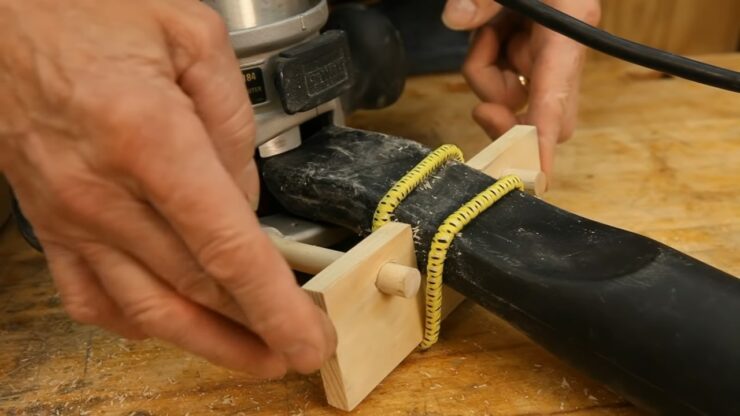
When it comes to dust collection, there are a few key points to consider that can save you both time and money. The first is the power of the router. With modern routers diverting large volumes of air, you need to ensure your dust collector is powerful enough to match the output. This means considering the watts and amps being used by the router as well as checking for extra features such as anti-clog filters.
The size of your shop floor should also be taken into account when selecting a dust collector. Larger shops may require more than one dust collector in order to optimize efficiency and cost savings. Your preferred method of collecting dust should also be taken into consideration, either via bags or centralized vacuums, which can make all the difference when it comes down to post-processing cleanup.
Think about whether you need additional attachments or add-ons that could come in handy when flattening slabs with a router—vacuum kits, additional hoses, and connectors all make jobs easier and quicker. Last but not least, some of them have their own built-in dust collection systems making them ideal for smaller workshops or those with limited home budgeting options.
Accessories
When it comes to deciding on the best router for flattening slabs, there are several important accessories that you should take into consideration. Depending on which model you choose, each piece of equipment can help make your job easier and the results more accurate. These accessories include a dust extraction hood, a leg or fence set-up, a circle cutting jig, and other sorts of dedicated jigs for carrying out particular operations on the slab surface or edges.
A dust extraction hood will attach to your table, allowing you to collect any sawdust created as a result of routing operations. This ensures that sawdust does not blow around fire hazards — making your job environment safer — whilst reducing clean-up time when completing projects.
Depending on how often and what type of flat stock you intend to route, investing in a leg or fence set-up might prove useful in creating larger surface area options within the workspace. A circle cutting jig is useful when cutting cutouts or raised circular designs as part of the routed finish — this can also be adapted using other template patterns for creating specialty shapes. Other dedicated jigs could include tenon cutting template sets allowing route faces that require consistently sized recesses with uniform depth across multiple pieces being routed together simultaneously.
Top Router Picks
Are you searching for the best router for flattening slabs? If so, you’ve come to the right place. We’ve taken the time to review a variety of routers for flattening slabs and have come up with a list of the top picks.
Porter-Cable 690LR
The Porter-Cable 690LR Router is a very popular choice for flattening slabs and it’s not hard to see why. It’s armed with an 11 amp motor that produces plenty of power for completing even the toughest router jobs. The base can be adjusted for accurately controlling plunge depths up to 2-3/4 inches and this adjustable base makes routing large pieces a breeze. It also features a large micro-adjustment ring on the motor housing, providing you with high levels of control over the cutting depth.
This one is sturdily built, so you can have confidence when it comes to handling larger boards or going full-depth into challenging materials like maple or oak. The ergonomic handles on top make it easy and comfortable to maneuver no matter how long the job takes. Additionally, the machine comes with an edge guide that will quickly attach to your base plate and provide consistent guidance along your cutting path for extra accuracy when cutting multiple pieces in succession.
Perhaps most importantly, this router comes with five chamfering leads that allow you to select from 1/8” – ¼” sizes so if you want highly accurate angles, this router can do the job! All in all, the Porter Cable 690LR Router delivers great value when it comes to flattening slabs on any level of project complexity; whether you are just starting out or a seasoned woodworker, this router should definitely be at the top of your list!
Bosch 1617EVSPK
The Bosch 1617EVSPK fixed-base router is ideal for various woodworking applications, offering a powerful 2.25 HP motor to flatten intricate designs in no time.
It is equipped with a variable-speed motor that offers speeds ranging from 8,000 to 25,000 RPMs – perfect for working with both soft and hardwoods. The 1617EVSPK also comes with a 6-point depth adjustment, plus adjustable turret stops for fast and repeatable depth settings every time.
Additionally, the ergonomic design of this model allows users to work comfortably in tight spaces while still having optimal control over the router and its cutting speed. With its soft start, smooth handling, and precision accuracy, this tool is a go-to choice for serious woodworking professionals looking to finish projects accurately and quickly.
Triton TRA001
Triton TRA001 is a robust, reliable, and easy-to-use plunge router that ensures consistently high results with its powerful 3.5 HP motor corded router range. It is the perfect tool for use by professionals as well as DIY enthusiasts making flat surfaces on slabs of hardwood.
The Triton TRA001’s key features include:
- Variable speed control provides maximum control in different materials and applications;
- The soft start feature ensures smooth operation without kickback;
- Dust extraction port helps reduce dust particles when in use;
- Spindle lock for quick and easy bit changes.
- 13mm plunge depth for extra versatility in your work.
The same model has an optional spindle lock button that allows one-hand bit changes along with durable rubber-coated handles for an ergonomic grip, a counterbalanced spindle to reduce vibration and noise levels, a high-quality plastic baseplate adjusts from 0 – 45 degrees angle with positive stops at 22.5, 30 & 45 degrees plus more exclusive features that make it an ideal choice for serious woodworkers.
DEWALT DW618PK
The DEWALT DW618PK router is an ideal choice for flattening slabs for a variety of woodworking applications. Designed with an 11 amp, 2-1/4 HP motor, this router is capable of delivering enough power to tackle even your toughest jobs. The dual position switch allows you to adjust the speed range from 8000 to 24000 RPM, making it easy to get the right results for any type of material you’re working with.
In addition, its electronic feedback control ensures that the speed won’t drop while cutting. This will give you consistent results every time. The unit also has a 6-position adjustable turret stop which matches often-used bit diameters and lets you make all sorts of cuts quickly, accurately, and safely. A soft start feature helps prevent damage to your workpiece by greatly reducing the kickback normally created when starting up such power tools, allowing for fast and controlled use.
The DW618PK can handle a wide variety of sizes and shapes, including curved edges and circle cutting without difficulty or need for additional accessories. Its lightweight design makes it easy to use over long periods as well as being convenient for portability and storage.
Makita RT0701C
The Makita RT0701C is an incredibly popular and reliable choice for flattening slabs. The electronic speed control system adjusts the speed at just 1/64th-inch intervals and the variable speed motor handles hardwoods without bogging down, allowing for consistent cut depths. The depth ring allows for quick depth settings to within 1/32-inch accuracy, saving time and precision when cutting.
A 1-1/4 hp motor running a 10,000 to 30,000 rpm range makes this one of the most powerful options on the market today.
This router also has an adjustable plunge rod which can be used with either trim or plunge bases, creating even more versatility. The rigid aluminum construction reduces vibration as well as noise which makes this option ideal in environments that require minimal sound levels or disturbance. The bevel turret stop allows for multiple precision steps at commonly used angles of up to 45 degrees in 5-degree increments making this an incredibly versatile tool for any application.
FAQs
What safety precautions should be taken when using a router to flatten slabs?
It is important to wear eye and ear protection, as well as a dust mask when using it to flatten slabs. Additionally, it is important to use the proper techniques and tools to avoid accidents or injury.
How long does it take to flatten a slab using a router?
The time it takes to flatten a slab using a router depends on the size and thickness of the slab, as well as the type of router and bit being used.
Can a router be used to create a specific shape or design on a slab?
Yes, it can be used to create specific shapes or designs on a slab by using different types of bits.
Should the router bit be replaced after using it to flatten slabs?
It is a good idea to replace the bit after using it to flatten slabs to ensure that it is sharp and in good condition for future use.
How often should the router be cleaned and maintained?
It should be cleaned and maintained regularly to ensure that it is functioning properly and to extend its lifespan.
Can a router be used to flatten slabs of any thickness?
It can be used to flatten slabs of varying thicknesses, but it may take more time and effort to flatten thicker slabs.
Is it necessary to use a router table when flattening slabs?
It is not necessary when flattening slabs, but it can make the process easier and more precise.
Conclusion
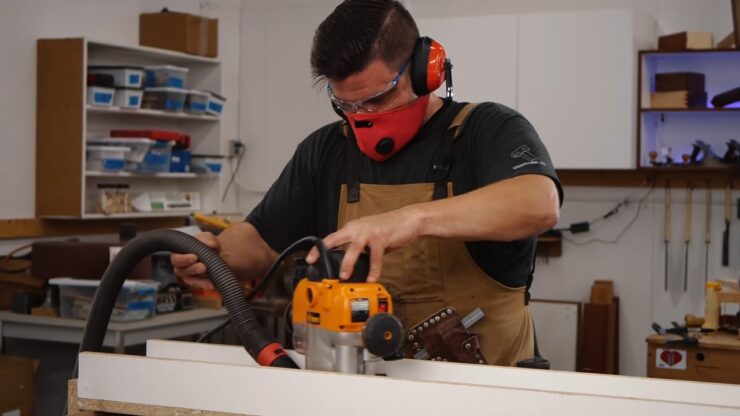
In conclusion, there are several excellent routers available for flattening slabs. We recommend assessing your project requirements and budget to determine the best model for you. Bear in mind that router stability is an essential factor when considering a router for such a specific task, so be sure to consider a heavy-duty router with precision settings.
Additionally, care must be taken to ensure that the materials used match the specifications of the machine so as not to damage either your slab or router. With these points in mind, you can find the best router for flattening slabs for your project needs.
